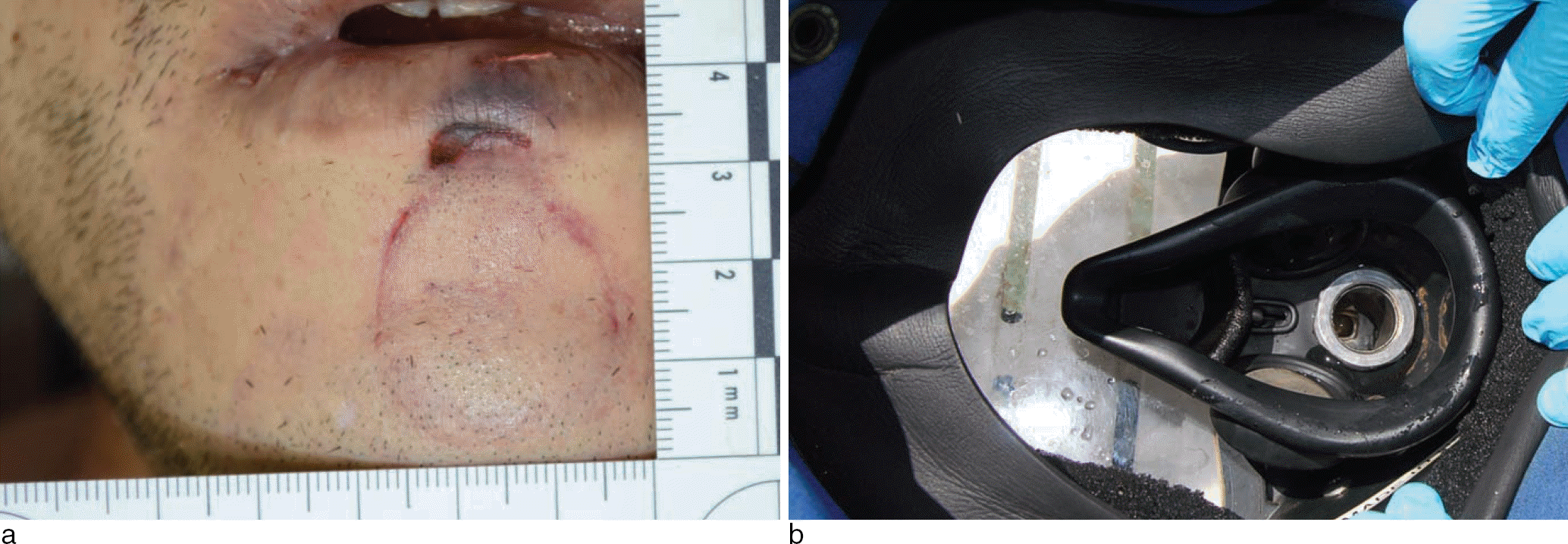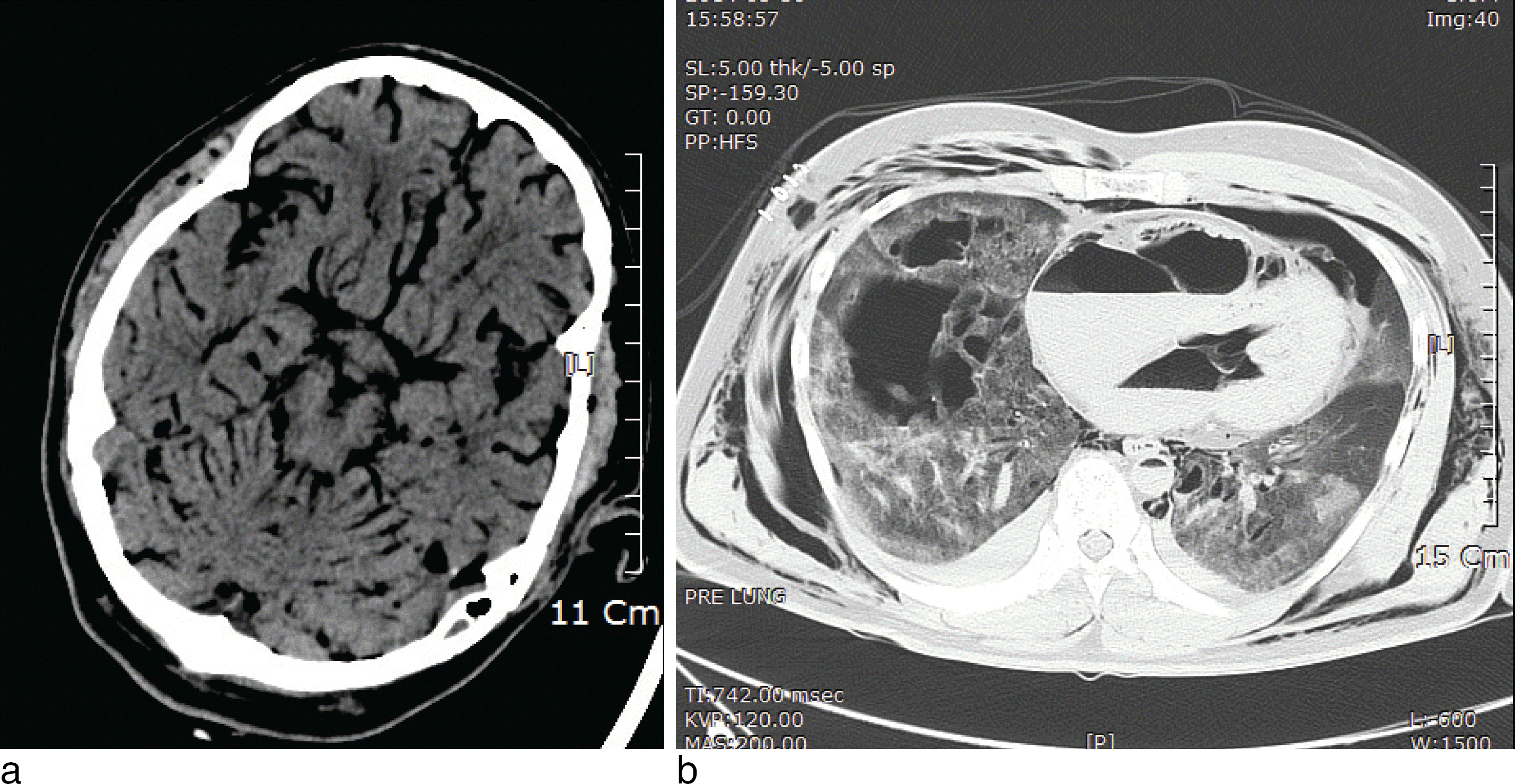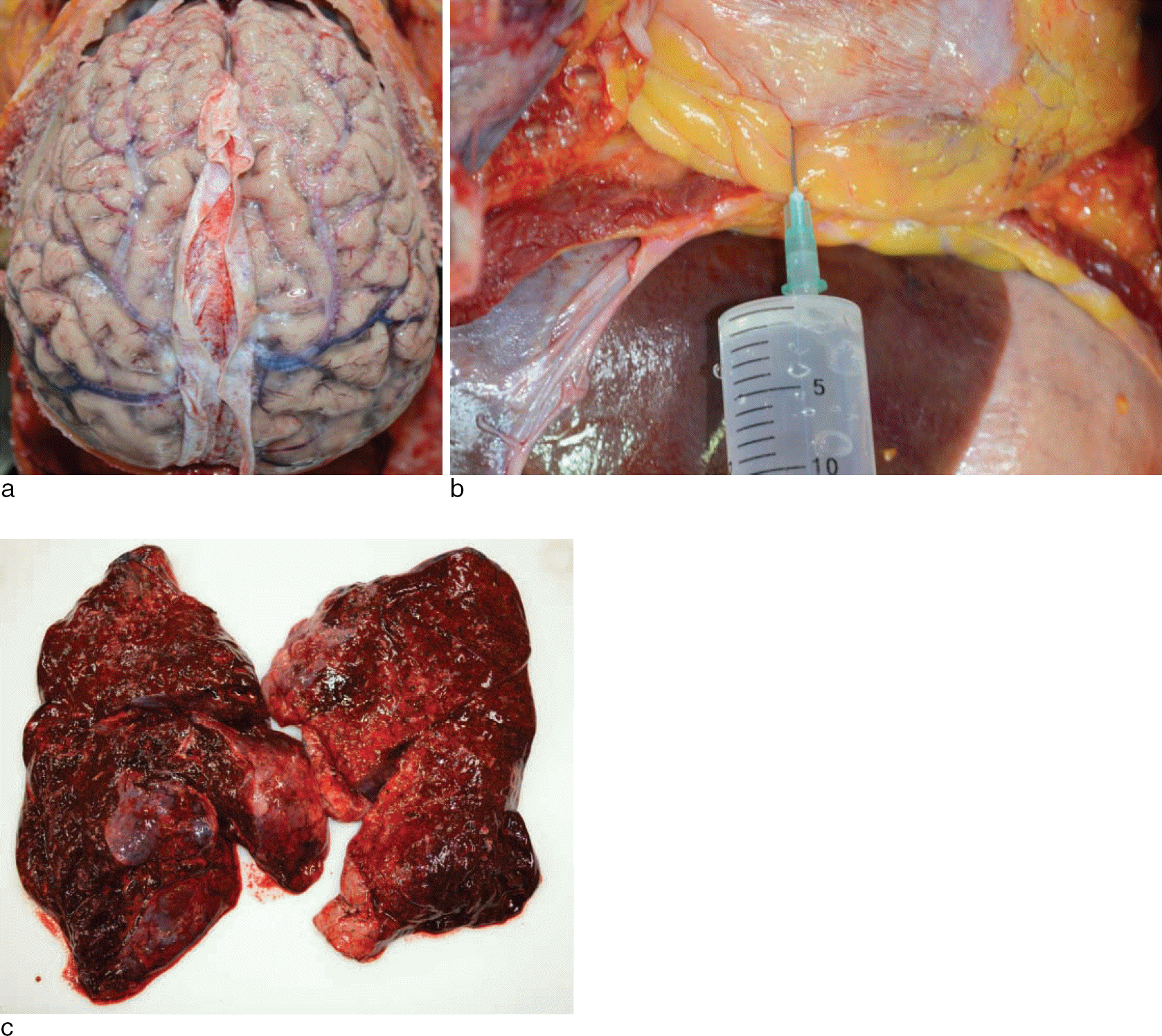Abstract
A 44-year-old man was cutting an outer plate of a ship, at a depth of 25 m below sea level. Following a sudden explosion, he was discovered unconscious and was carried to the surface by other divers. There was no evidence of vital signs upon arrival at the hospital. Postmortem computed tomography, which was performed prior to autopsy, revealed massive pneumocephalus in the brain, pneumohemothorax, diffuse lung contusions with multiple traumatic lung cysts, air-fluid level in the cardiac chamber of the chest, and pneumoperitoneum in the abdomen. Postmortem external examination showed a circular abrasion on the jaw, diffuse subcutaneous emphyse-ma, and contusion in the right upper arm. An internal examination revealed intravas-cular air bubbles in all four chambers of the heart, and diffuse pulmonary trauma including contusion, laceration, and multiple traumatic cysts. Blast injury to the chest, and air embolism due to the underwater explosion were established as the underlying cause of death.
Go to : 
References
1. Kim YS. Technical approach for the postmortem examination of SCUBA diving fatality. Korean J Leg Med. 2014; 38:1–7.

2. Ihama Y, Miyazaki T, Fuke C, et al. Scuba-diving related deaths in Okinawa, Japan, from 1982 to 2007. Legal Med (Tokyo). 2008; 10:119–24.

3. Saukko P, Knight B. Knight's forensic pathology. 3rd ed.London: Arnold;2004. p. 274–5.
4. Turkmen N, Akan O, Cetin S, et al. Scuba diver deaths due to air embolism: two case reports. Soud Lek. 2013; 58:26–8.
5. Lawrence C. Interpretation of gas in diving autopsies. SPUMS J. 1997; 27:228–30.
Go to : 
 | Fig. 1.Brain computed tomography shows a massive pneumocephalus and air in the cerebral vessels and subcutaneous tissue (a). Chest computed tomography shows a massive subcutaneous emphysema, pneumo-hemothorax, pneumomediastinum, multiple traumatic lung cysts, and air fluid levels in cardiac chamber and aorta (b). |




 PDF
PDF ePub
ePub Citation
Citation Print
Print




 XML Download
XML Download